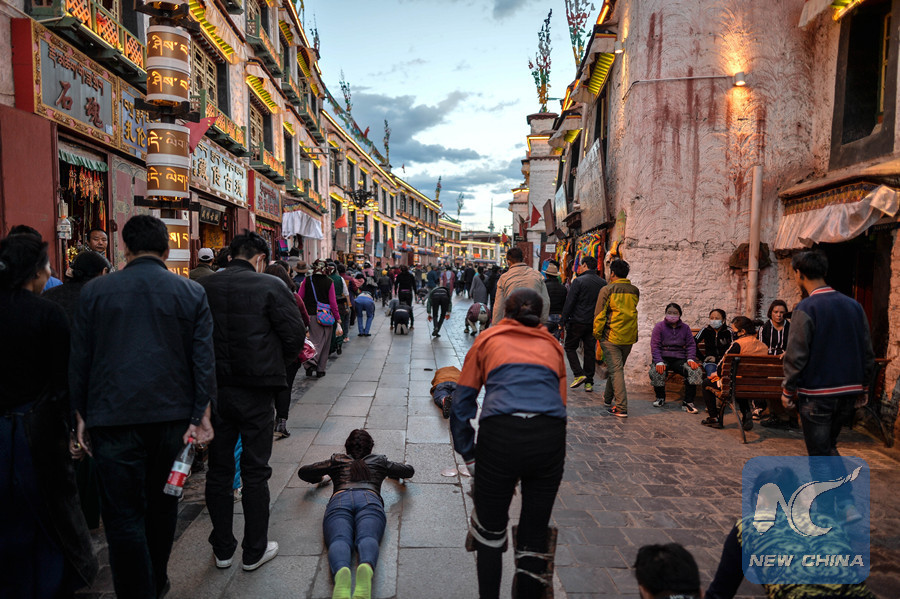
Pilgrims perform full body prostrations on the Barkhor Street in the old area of Lhasa, capital of Southwest China's Tibet Autonomous Region on May 21, 2016. (Xinhua/Purbu Tashi)
BEIJING June 11 (Xinhua) -- On the Tibetan plateau, Saga Dawa is one of the most important religious festivals, and one of the best times to visit if you're interested in Tibetan Buddhism and culture.
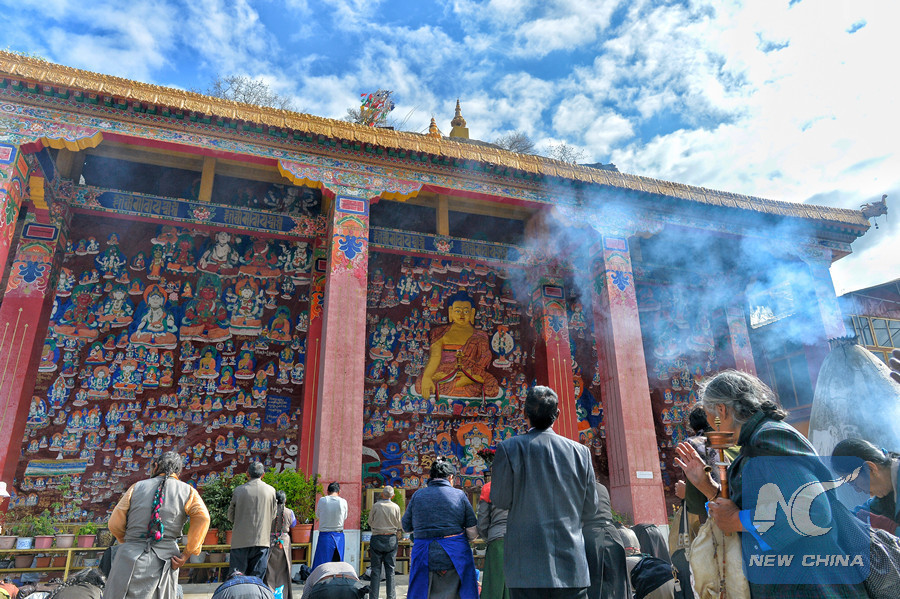
Believers gather in Jokhang Temple in the old area of Lhasa, capital of Southwest China's Tibet Autonomous Region on May 21, 2016. (Xinhua/Purbu Tashi)
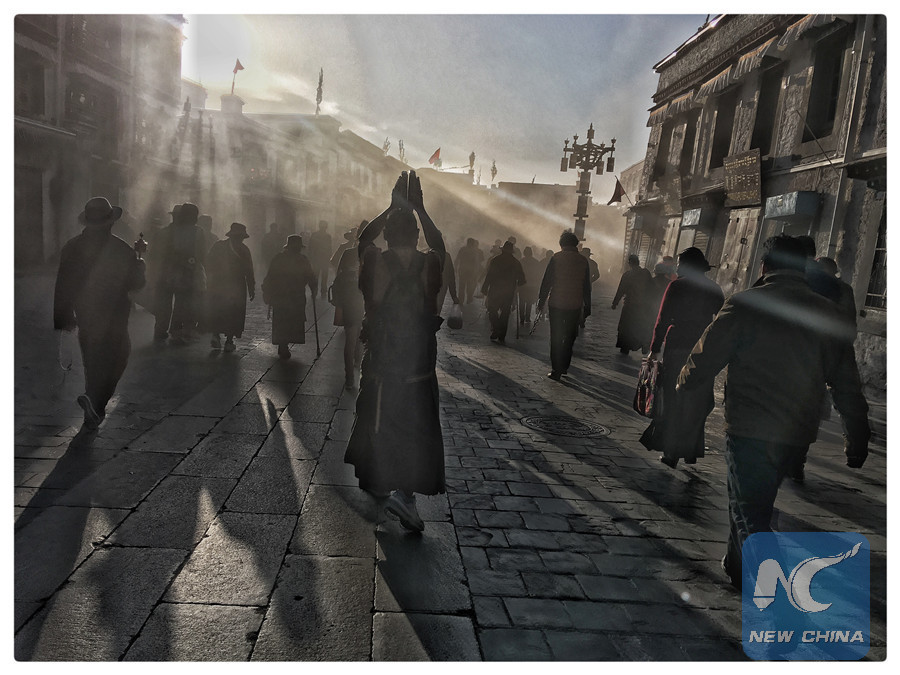
Pilgrims walk around the Jokhang Temple in the old area of Lhasa, capital of Southwest China's Tibet Autonomous Region on May 21, 2016. (Xinhua/Purbu Tashi)
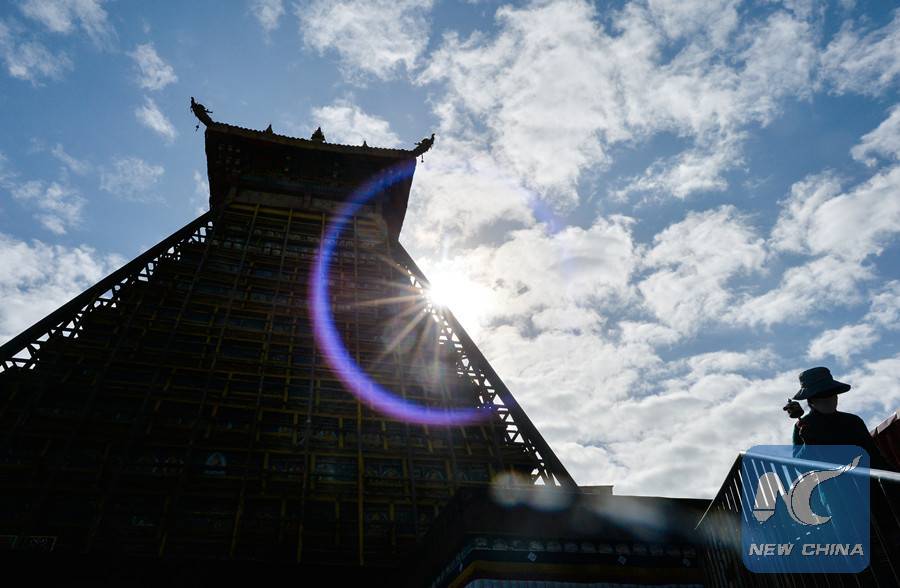
Photo taken on May 21, 2016 shows Jokhang Temple in the old area of Lhasa, capital of Southwest China's Tibet Autonomous Region. (Xinhua/Purbu Tashi)
Saga Dawa falls on the full moon, or the 15th day, of the fourth month in Tibetan lunar calendar. It marks three important events of Sakyamuni, founder of Buddhism: his birth, enlightenment and attaining nirvana.
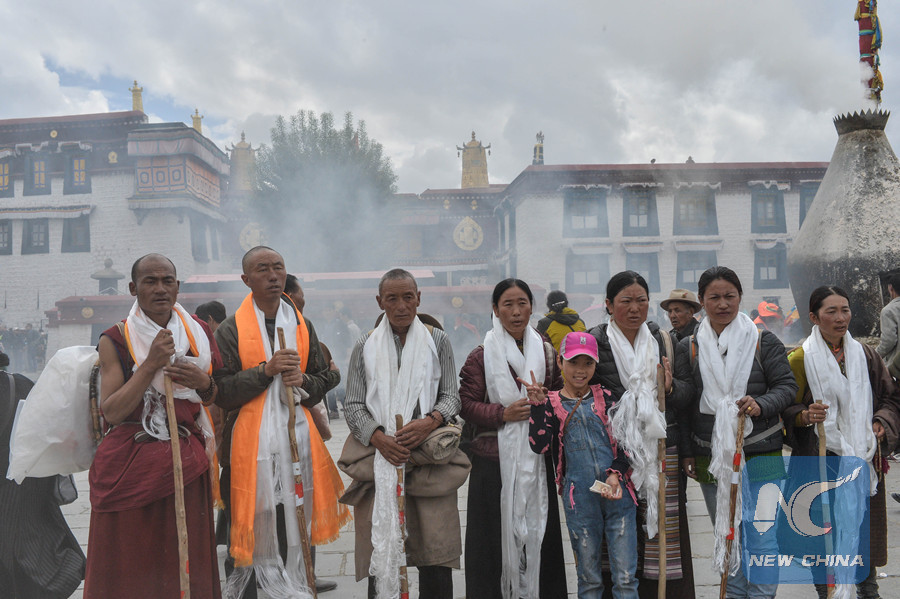
Believers gather in Jokhang Temple in the old area of Lhasa, capital of Southwest China's Tibet Autonomous Region on May 21, 2016. (Xinhua/Purbu Tashi)

A Lama makes decoration in Jokhang Temple in the old area of Lhasa, capital of Southwest China's Tibet Autonomous Region on May 21, 2016. (Xinhua/Purbu Tashi)
The whole month is actually considered sacred because of this auspicious day, so the celebrations run for the entire period.
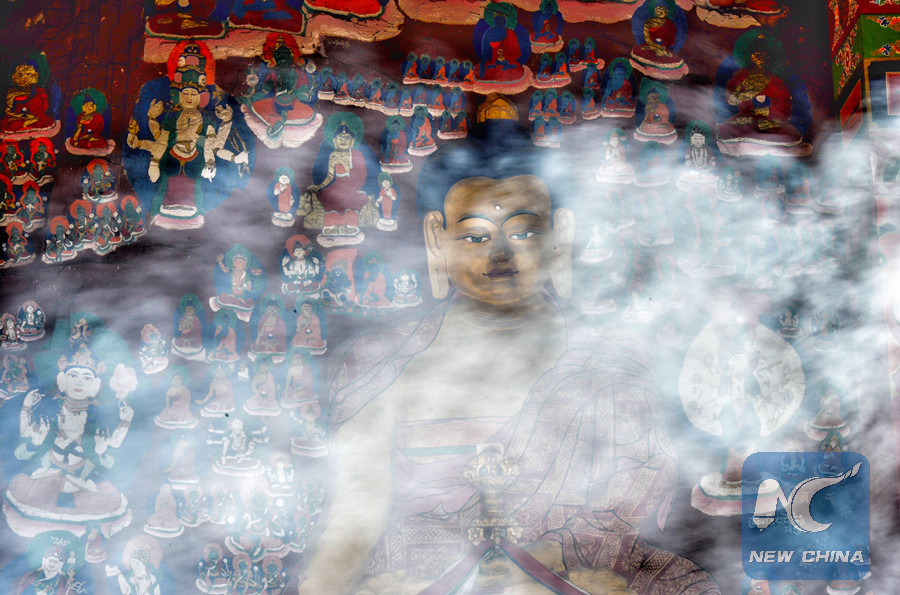
Photo taken on May 21, 2016 shows incense smoke in front of a Buddha picture in the Jokhang Temple in the old area of Lhasa, capital of Southwest China's Tibet Autonomous Region. (Xinhua/Purbu Tashi)
It is believed that good deeds and prayers are multiplied a thousand-fold during this month. So many people are immersed in prayers and carrying holy beads.

Photo taken on May 21, 2016 shows a prayer wheel against the background a tower in the Jokhang Temple in the old area of Lhasa, capital of Southwest China's Tibet Autonomous Region. (Xinhua/Purbu Tashi)
All of Tibet is immersed in the festive and spiritual atmosphere. Events are held in many places on the plateau, but the Jokhang Temple, encircled by the thousand-year-old Barkhor Street in the old area of Lhasa, is the best place to see how Tibetans mark the festival. Visitors and believers are equally welcome.

Pilgrims walk around the Jokhang Temple in the old area of Lhasa, capital of Southwest China's Tibet Autonomous Region on May 21, 2016. (Xinhua/Purbu Tashi)
Walking around the temple or other sacred sites is a daily ritual, when pilgrims hold prayer wheels and walk clockwise around the temple from dawn to dark. Some have trekked thousands of miles to prostrate themselves before the sacred temple.

Pilgrims light butter lamps in the Jokhang Temple in the old area of Lhasa, capital of Southwest China's Tibet Autonomous Region on May 21, 2016. (Xinhua/Purbu Tashi)
The smell of burning incense and butter lamps fills the air. During this month, people also refrain from killing animals and give alms to anyone who asks.

